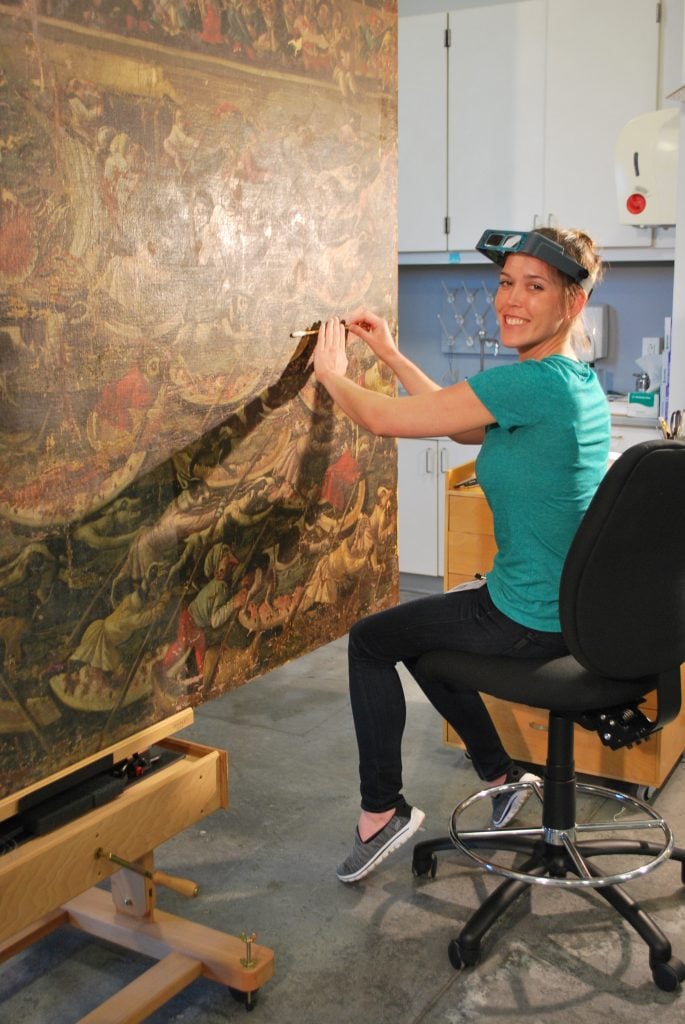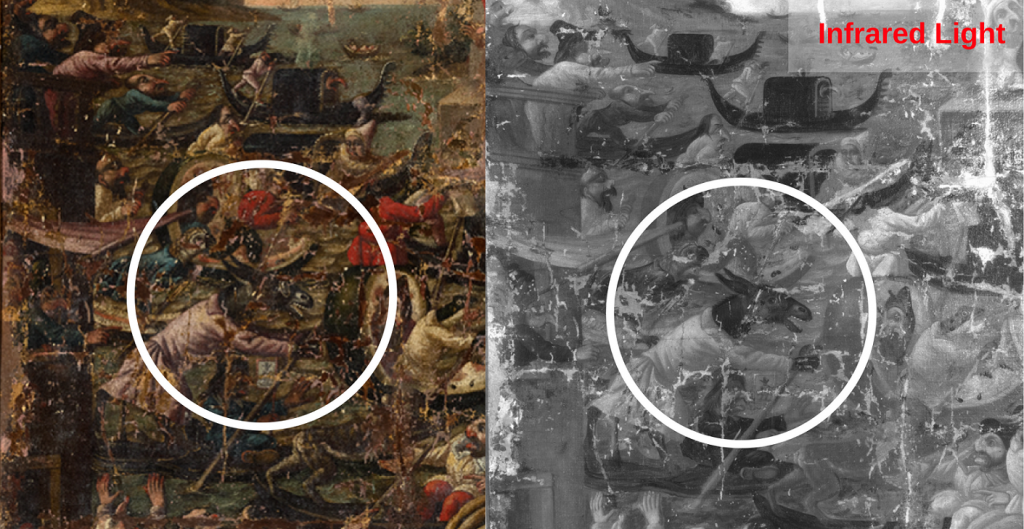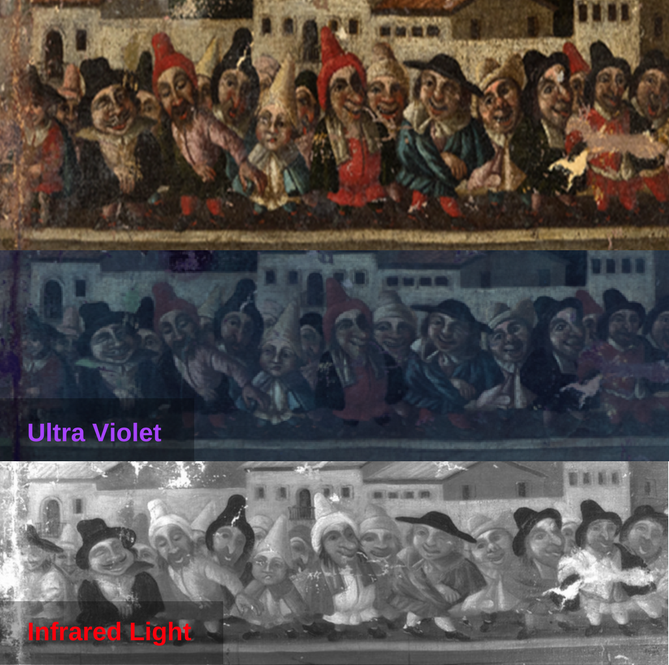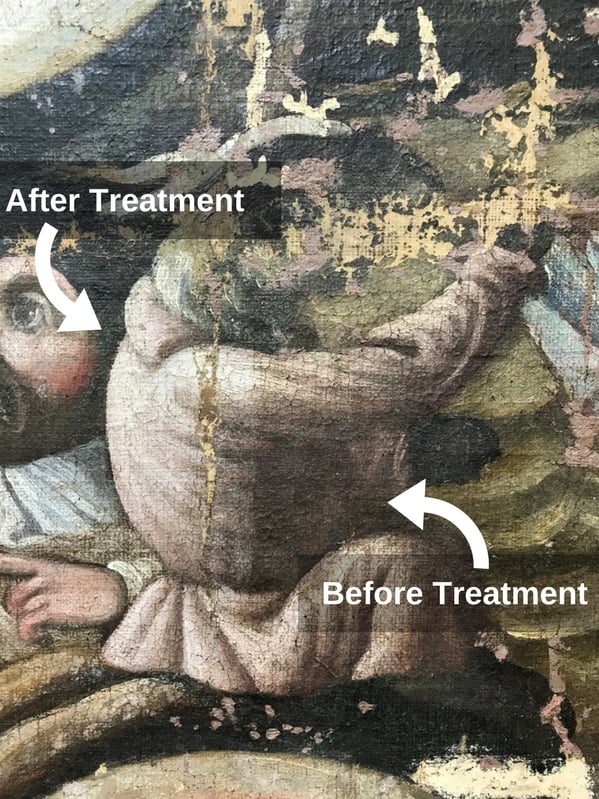The Ringling News
17 January 2023
Conserving the WatermelonRegatta
In 2017 The Ringling conservation staff began a major restoration treatment of the "Watermelon Regatta." Find out about the conservation process for this unique work, created in Italy in the early 1700s.
This project was made possible in part with the support of contributions received in the 2016 Giving Challenge held by The Community Foundation of Sarasota County, and with the help of The Patterson Foundation.
These before and during treatment images show the lower right corner of the painting before this project started and at the present stage of restoration. The before treatment image shows the yellowed varnish and the during treatment image shows the grime and varnish removed before re-varnishing.
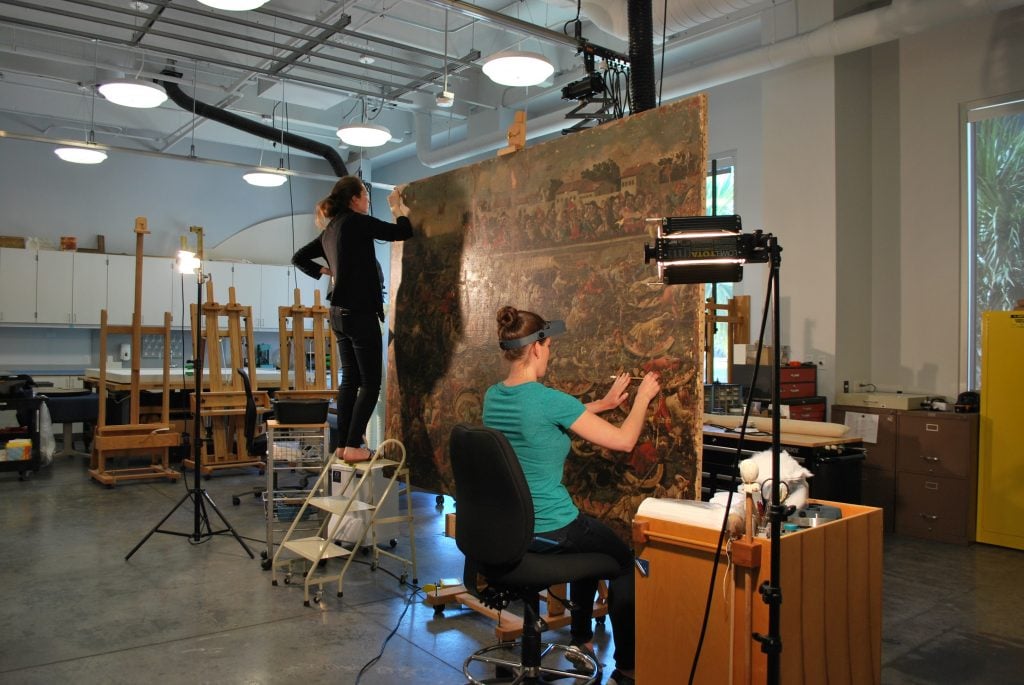
This oil painting on canvas was painted in the early 1700s in Italy, by the artist known as The Master of the Fertility of the Egg. The artist’s actual name is unknown, this moniker being derived from the title of another work by the same artist that is in the Milwaukee Art Museum. The Ringling’s first director, A. Everett “Chick” Austin, bought the 70 by 96-inch painting in 1950 and donated it to the Museum in 1951. After receiving a partial treatment several decades ago and spending many years in storage, the painting requires restoration before it can be displayed in the Museum.
The first step in conserving a work of fine art involved a careful examination by a conservator, looking with the naked eye, using a microscope, and then using different lights, including ultraviolet and infrared. This examination revealed repaired tears in the canvas and an old lining canvas, actively flaking paint, layers of surface grime, partially-removed overpaint and varnish, a more recent darkened varnish layer, and a large amount of poorly matched retouching (intended to cover areas of paint loss).
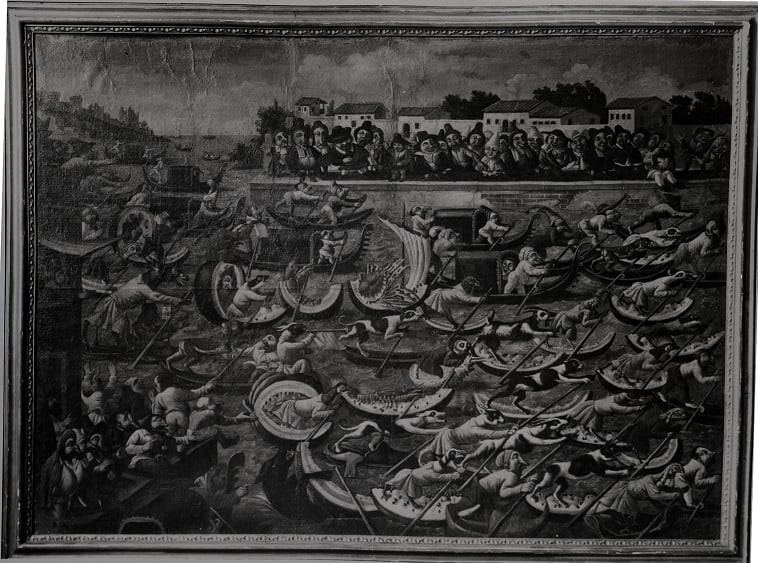
In this black and white image from 1963, the painting appears to be in better condition than before restoration began in 2017, because of a previous restorer’s overpainting that covered not only the damages but much of the original design. A lot of the overpaint was removed sometime after this photograph was taken.
By looking at the painting under different lighting conditions, various details become clearer, such as the head of the donkey in the crowd, or this row of jolly spectators.
After detailed examination, written and photographic documentation, testing, and analysis, the next step in conservation was to stabilize the insecure paint layers by applying adhesive under the paint flakes and gently putting them back into place.
Then came the removal of non-original materials, which included surface grime, discolored varnish, and much of the poorly matched overpaint. In this detail, you can see how much brighter the color is after the grime and discolored varnish were removed. Now you can even see the artist’s brush strokes and the subtlety in the colors.
After removal of more of the distracting overpaint and inappropriate filler material from throughout the painting, the next step will be to apply a new coat of varnish to saturate the colors and protect the original paint. Then, it will be time for what some conservators often enjoy the most: mixing paints, matching to the original colors, and inpainting areas of paint loss to reintegrate the entire composition. Little by little, details of the original design will begin to re-emerge!
Treatment of the painting has progressed relatively slowly, not only due to the careful and systematic approach taken but also because of the variety of demands on the time of the conservation staff. Occasional assistance provided by a graduate summer intern (below) and several private painting conservators has helped to move the treatment forward.
Watermelon Regatta is currently visible through the viewing windows of the Conservation Laboratory at The Ringling, located in the Johnson Blalock Education Center. We invite you to stop by and see the progress!
